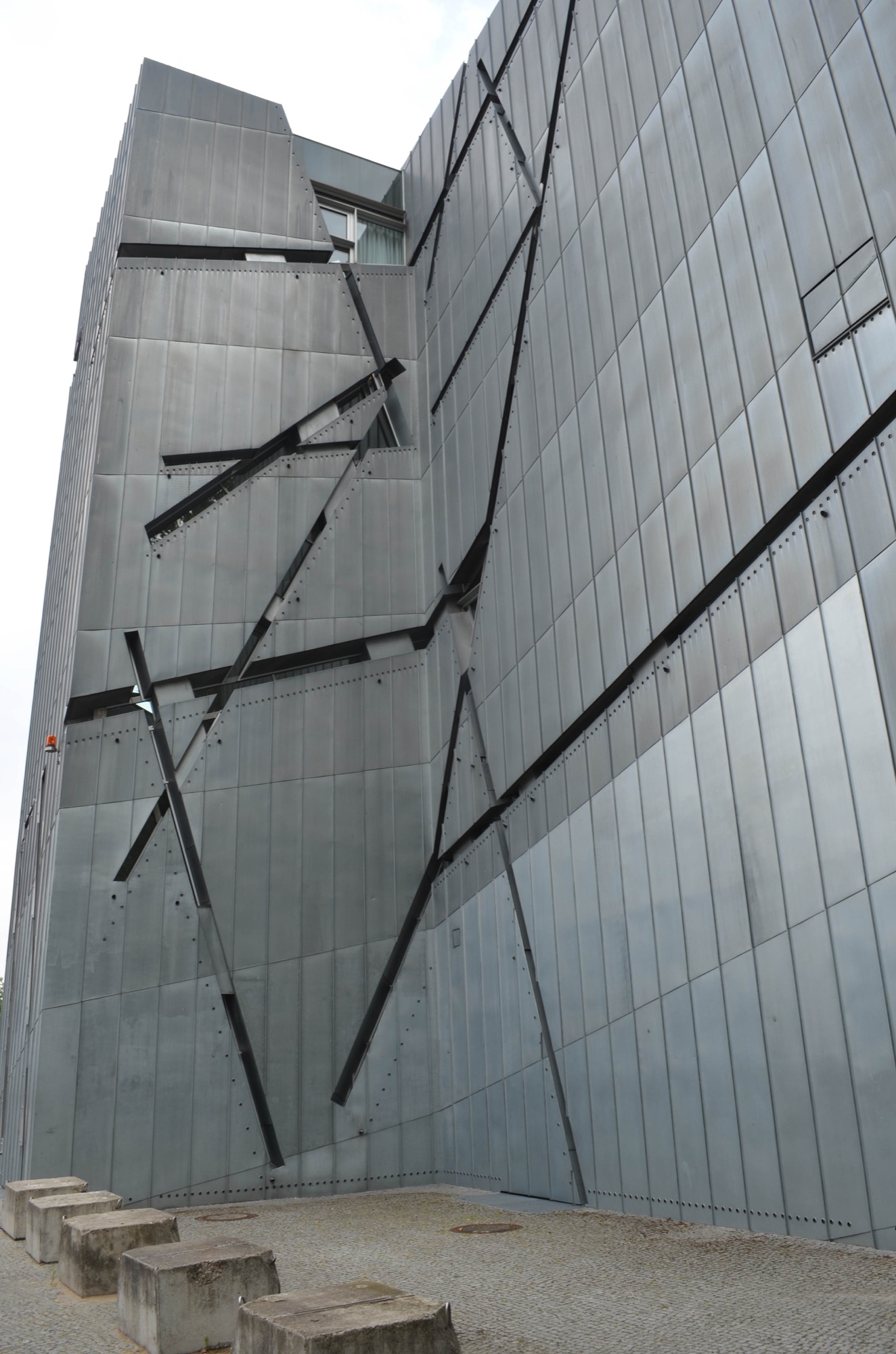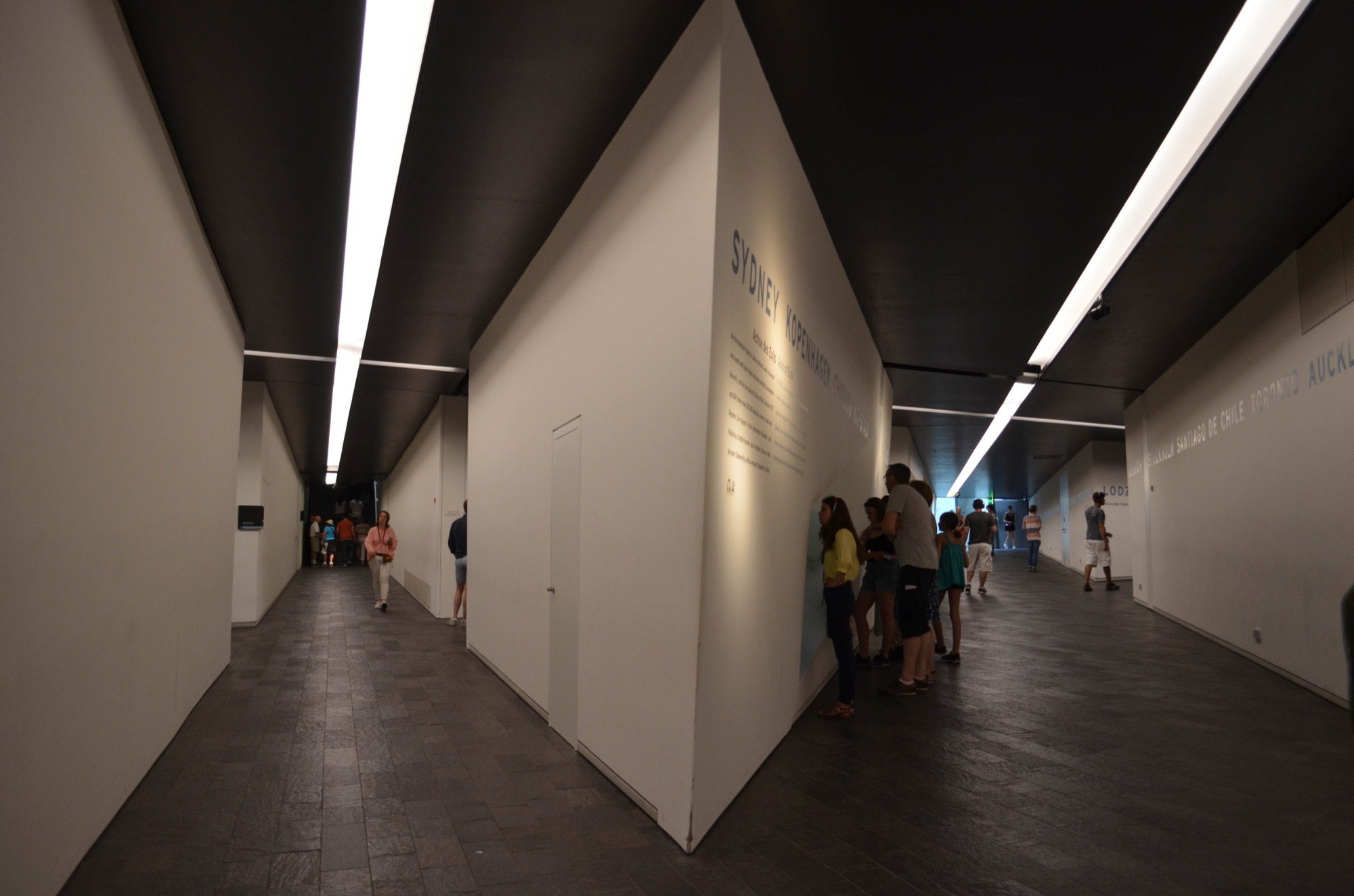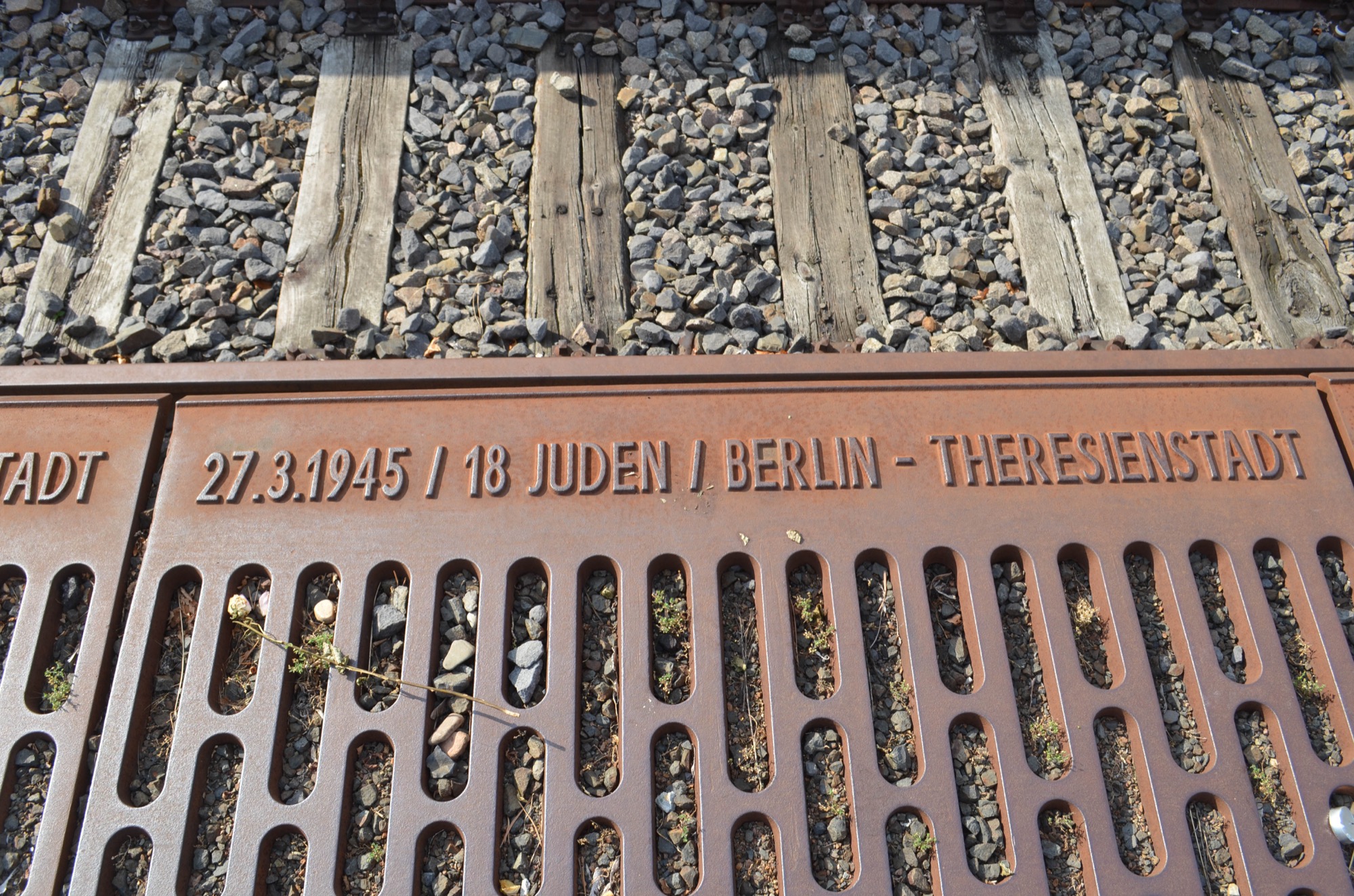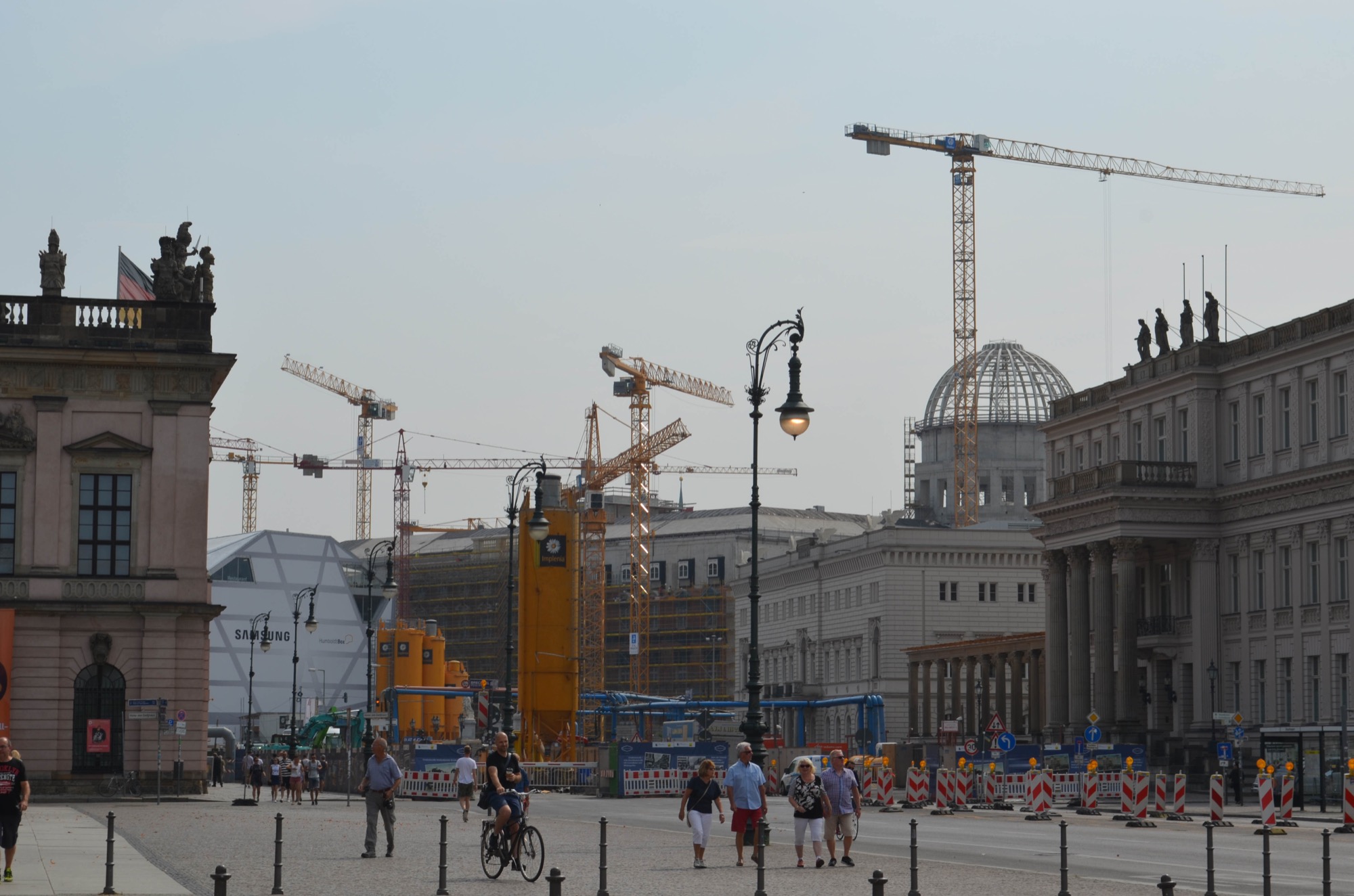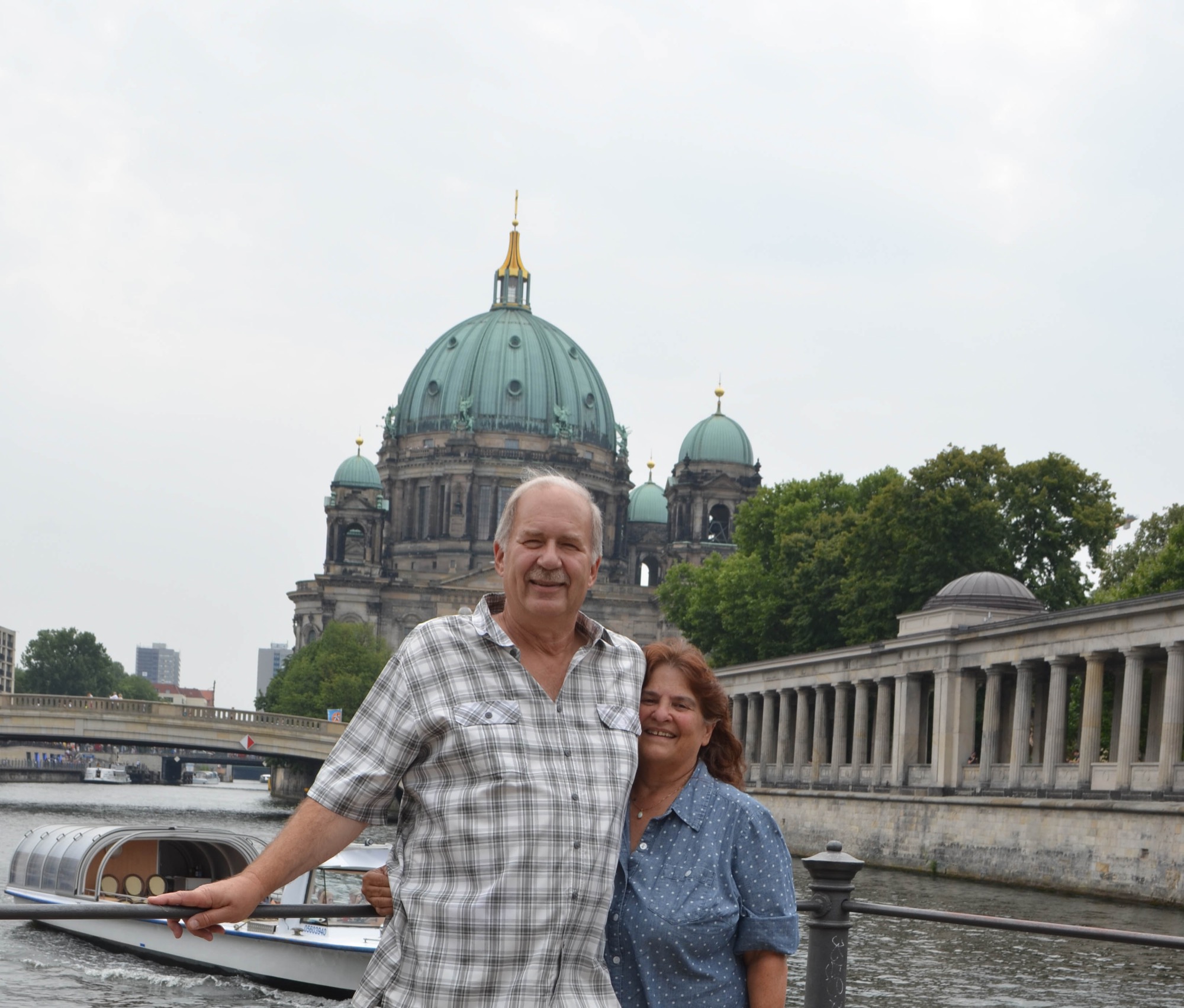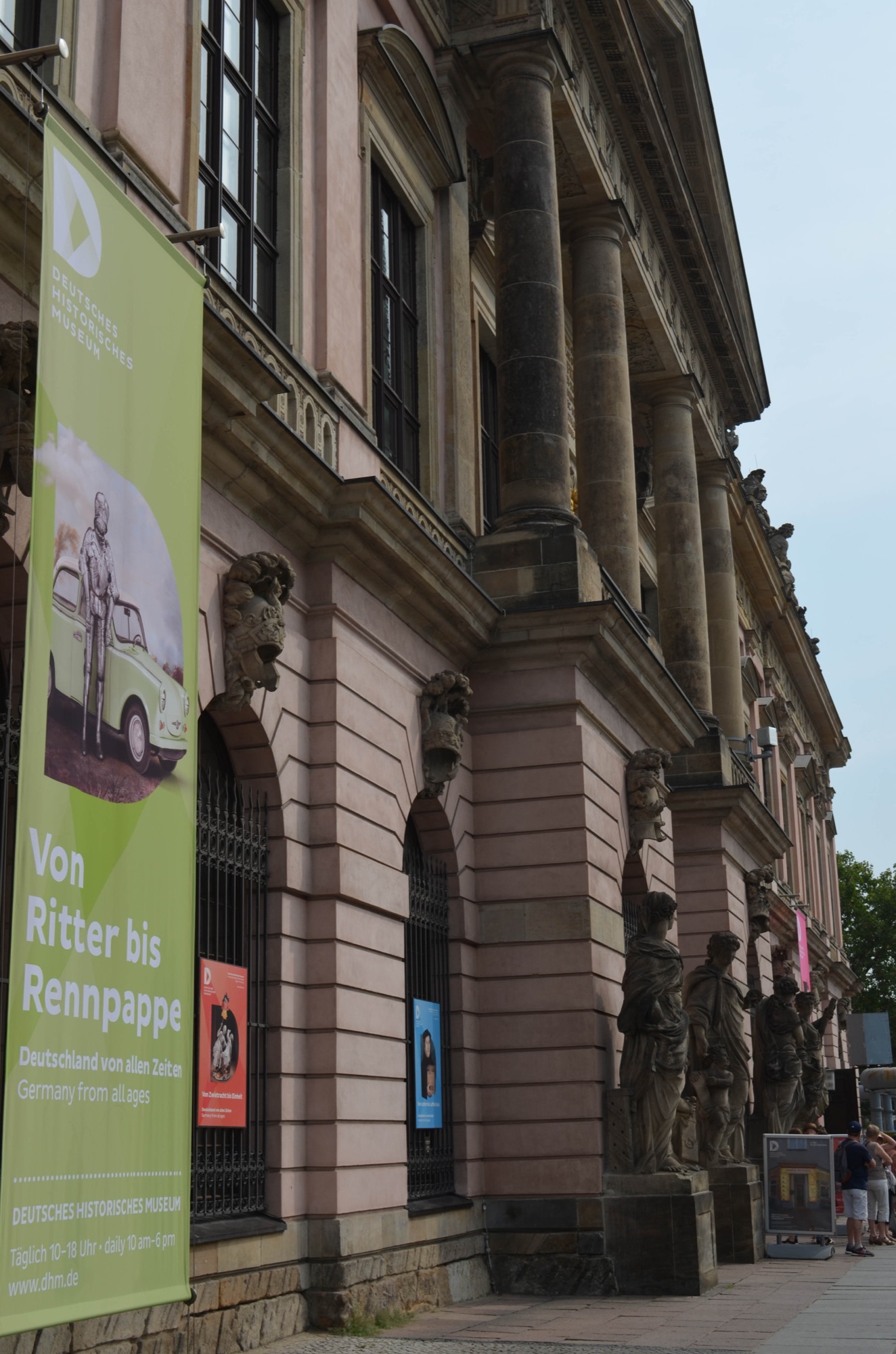Track 17 served as one of the major deportation sites for the Jews of Berlin during World War II. Many of the trains went directly to concentration camps at Auschwitz and Theresiensstadt.
Today there are 186 meter long steel plaques that line track 17 at Grunewald Station, one for each of the transports that deported Jews between October 1941 and February 1945. Each plaque tells the date, the number of Jews, and the destination of the train.
In 1933 there were about 160,000 Jews living in Berlin. By 1939, mostly due to emigration, there were only 75,000 Jews left in the city. Only about 1,200 Jews who had hidden or assimilated remained in Berlin at the end of World War II.

